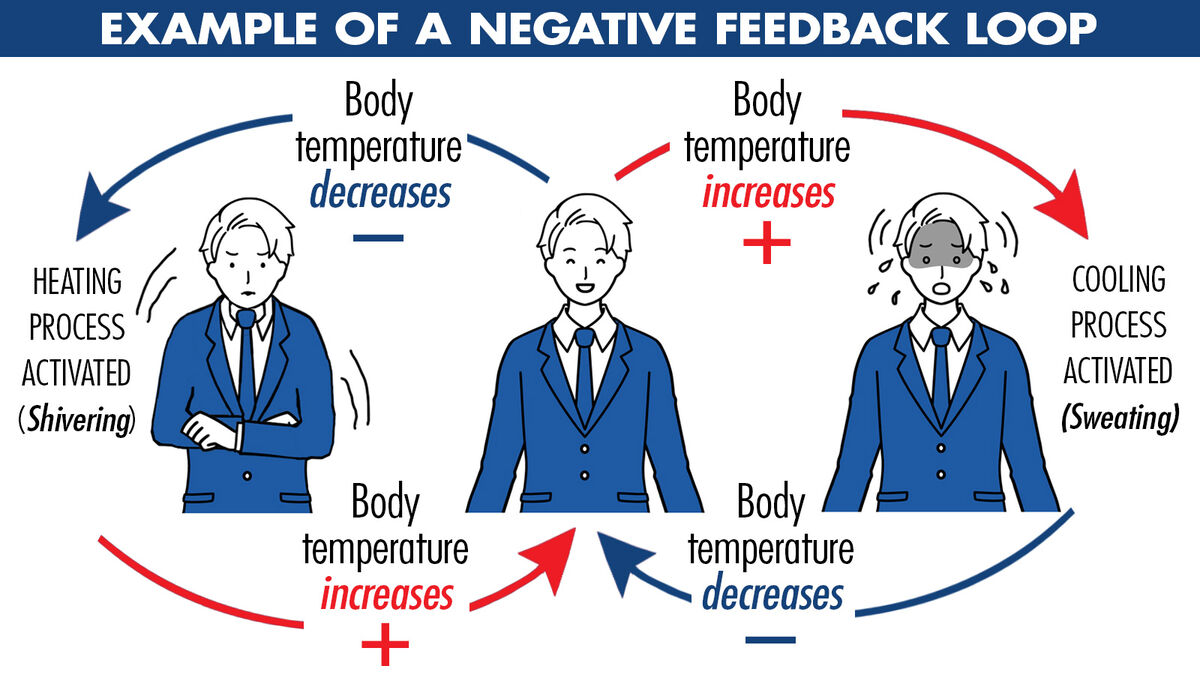AP BIO Unit 4 Review - Cell Communication and Cell Cycle
Cell Signaling
Local Signaling
connect cytosol through plasmodesmata (plant cells) and gap junctions (animals cells)
synaptic signaling nerves in animal cells
Long distance
hormones (endocrine signaling)
Signaling pathways are multistep process
This allows for control and regulation
Multistep pathways can amplify a signal: A few molecules can produce a large cellular response
Multistep pathways provide more opportunities for coordination and regulation of the cellular response than simpler systems do
3 Steps of Signaling Pathways
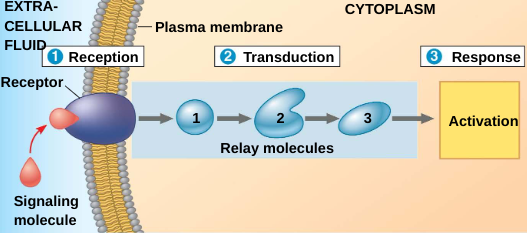
1) Reception
Ligands bind to a receptor on a target molecule
ligands are water soluble, chemical messengers, and signaling molecules
The binding is highly specific and causes a shape change in the receptor
GPCR
G protein-coupled receptor
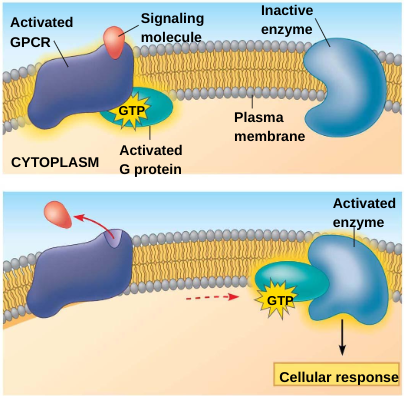
Ligand-Gated Ion Channels
Ligand → receptor → open gate → ions → electric signal
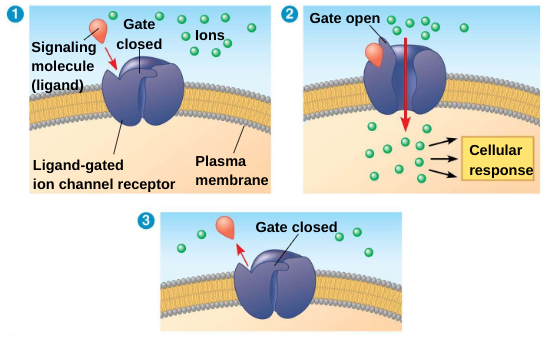
2) Transduction
proteins can activate other proteins
signal is amplified
phosphorylation cascade
sequence of signaling pathway events where one enzyme phosphorylates another
adding phosphate groups to proteins activates them
protein kinases transfer phosphates from ATP to proteins
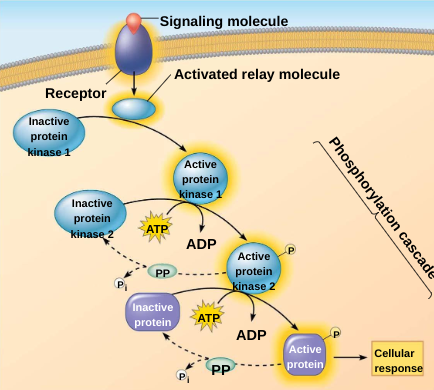
Dephosphorylation - removal of a phosphate group from an organic compound by hydrolysis. It is a reversible post-translational modification
provide a mechanism for turning off the signal transduction pathway
make protein kinases available for reuse, enabling the cell to respond to the signal again
Secondary messengers are small, nonprotein, water-soluble molecules or ions that spread throughout a cell by diffusion
commonly cAMP and calcium ions
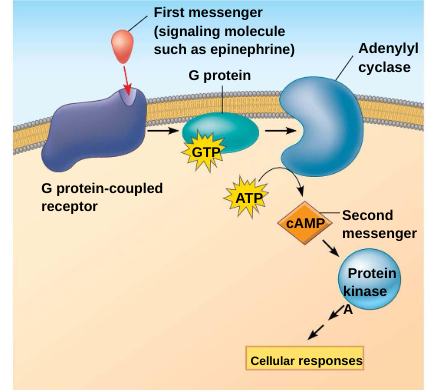
3) Response
The goal of signal transduction is to create a response of cellular activity in the cytoplasm or nucleus
Because of this, signaling pathways regulate the synthesis and activity of enzymes and proteins
utilize transcription factors to transcribe genes
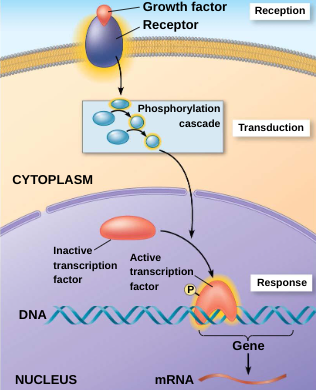
Feedback loops
Positive feedback - the response amplifies the stimulus and moved away from a set point
Childbirth
pressure on the cervix leads to more contractions which lead to more pressure
Apples
ripe apple release ethylene which ripens other apples
Negative feedback - The response maintains homeostasis and stays at a set point
High heart rate
high pulse and high breathing lead to more O2 intake which dampens the stimulus
Body Temp
Mitosis
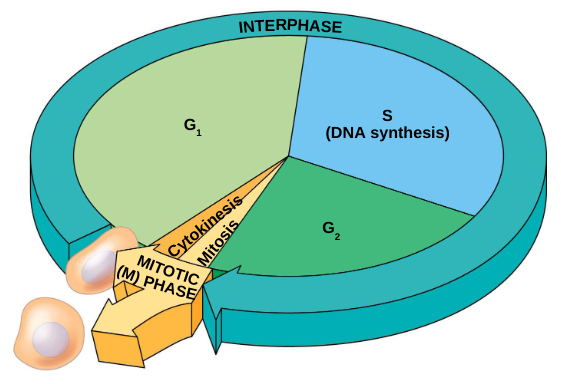
The goal if mitosis is to create genetically identical daughter cells
it occurs in somatic cells to repair tissue and plays a role in growth
it only happens in eukaryotic cells, prokarotic cells divide by binary fission
Interphase
most time of the cell cycle is spent in interphase
G1 is a gap phase
There is a checkpoint at the end to regulate the cell cycle
cyclin starts building up
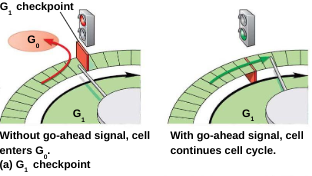
S is the phase where DNA is replicated
G2 is another gap phase
The g2 checkpoint checks that DNA is fully replicated and not damaged
cyclin accumulation is highest in G2 and binds to Cdk to make MPF which regulates the shift from g2 to M phase
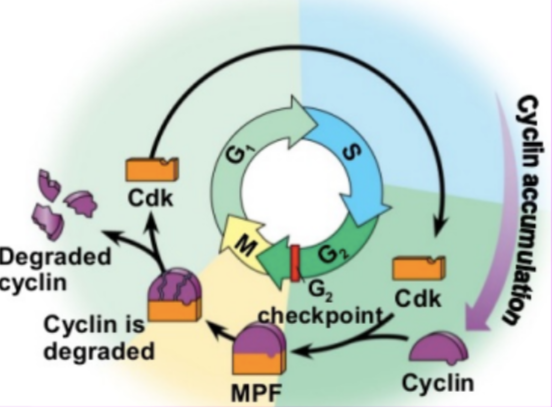
M Phase
M phase includes cell division
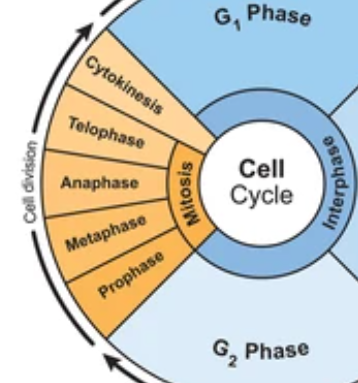
Prophase
The chromosomes start to condense (making them easier to pull apart later on)
The mitotic spindle begins to form. The spindle is a structure made of microtubules, strong fibers that are part of the cell’s “skeleton.” Its job is to organize the chromosomes and move them around during mitosis. The spindle grows between the centrosomes as they move apart
The nucleolus (or nucleoli, plural), a part of the nucleus where ribosomes are made, disappears. This is a sign that the nucleus is getting ready to break down
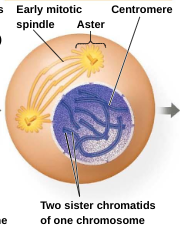
Late Prophase (Prometaphase)
The chromosomes become even more condensed, so they are very compact
The nuclear envelope breaks down, releasing the chromosomes
The mitotic spindle grows more, and some of the microtubules start to “capture” chromosomes
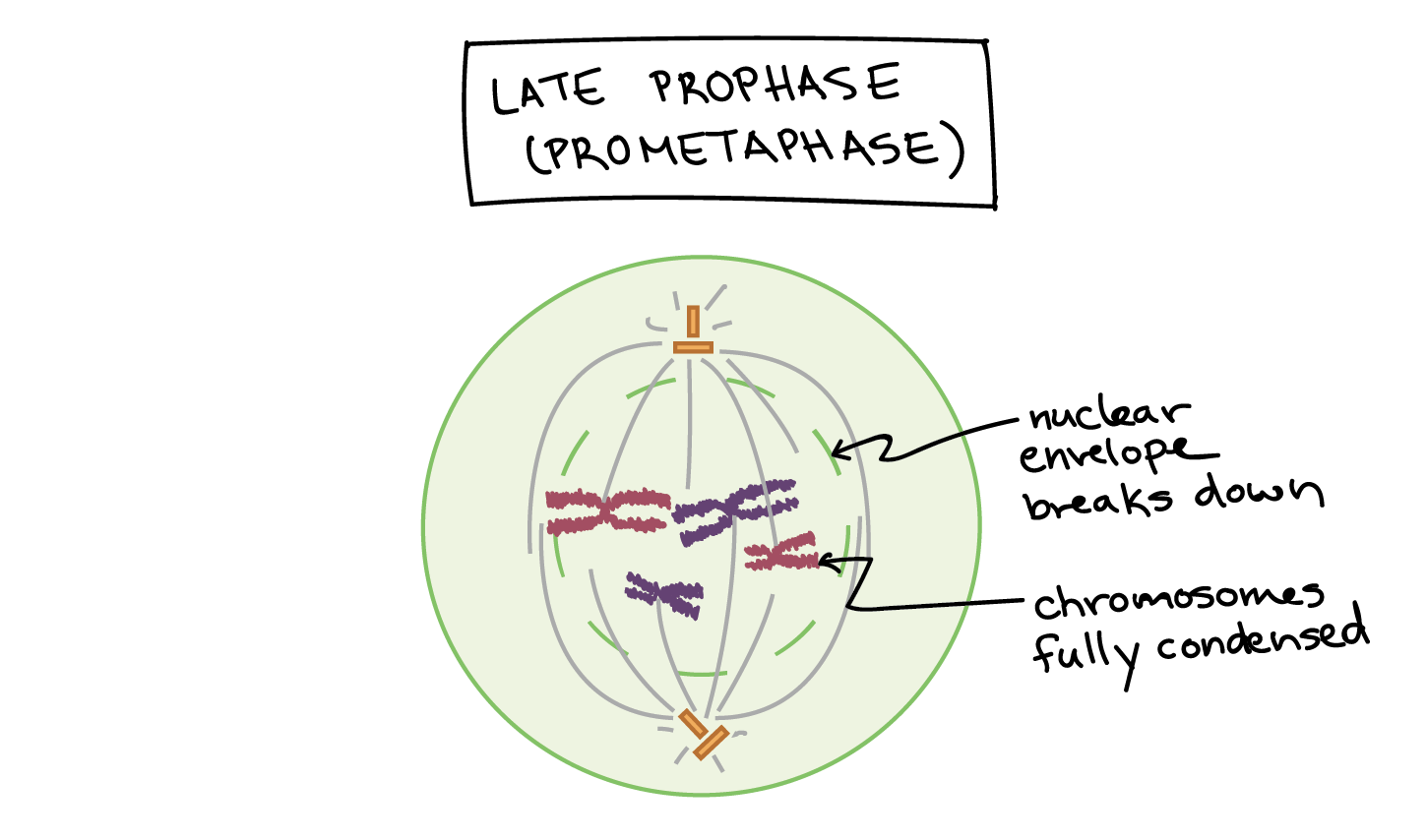
Metaphase
All the chromosomes align at the metaphase plate (not a physical structure, just a term for the plane where the chromosomes line up)
At this stage, the two kinetochores of each chromosome should be attached to microtubules from opposite spindle poles
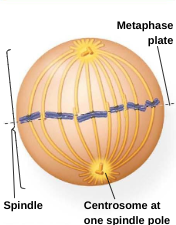
Spindle Checkpoint
helps ensure that the sister chromatids will split evenly between the two daughter cells when they separate in the next step
if a chromosome is not properly aligned or attached, the cell will halt division until the problem is fixed
prevents nondisjunction
Anaphase
The chromosomes of each pair are pulled towards opposite ends of the cell
Microtubules not attached to chromosomes elongate and push apart, separating the poles and making the cell longer

Telophase and Cytokinesis
Two new nuclei form, one for each set of chromosomes. Nuclear membranes and nucleoli reappear
The chromosomes begin to decondense and return to their “stringy” form
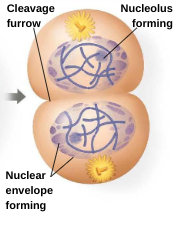
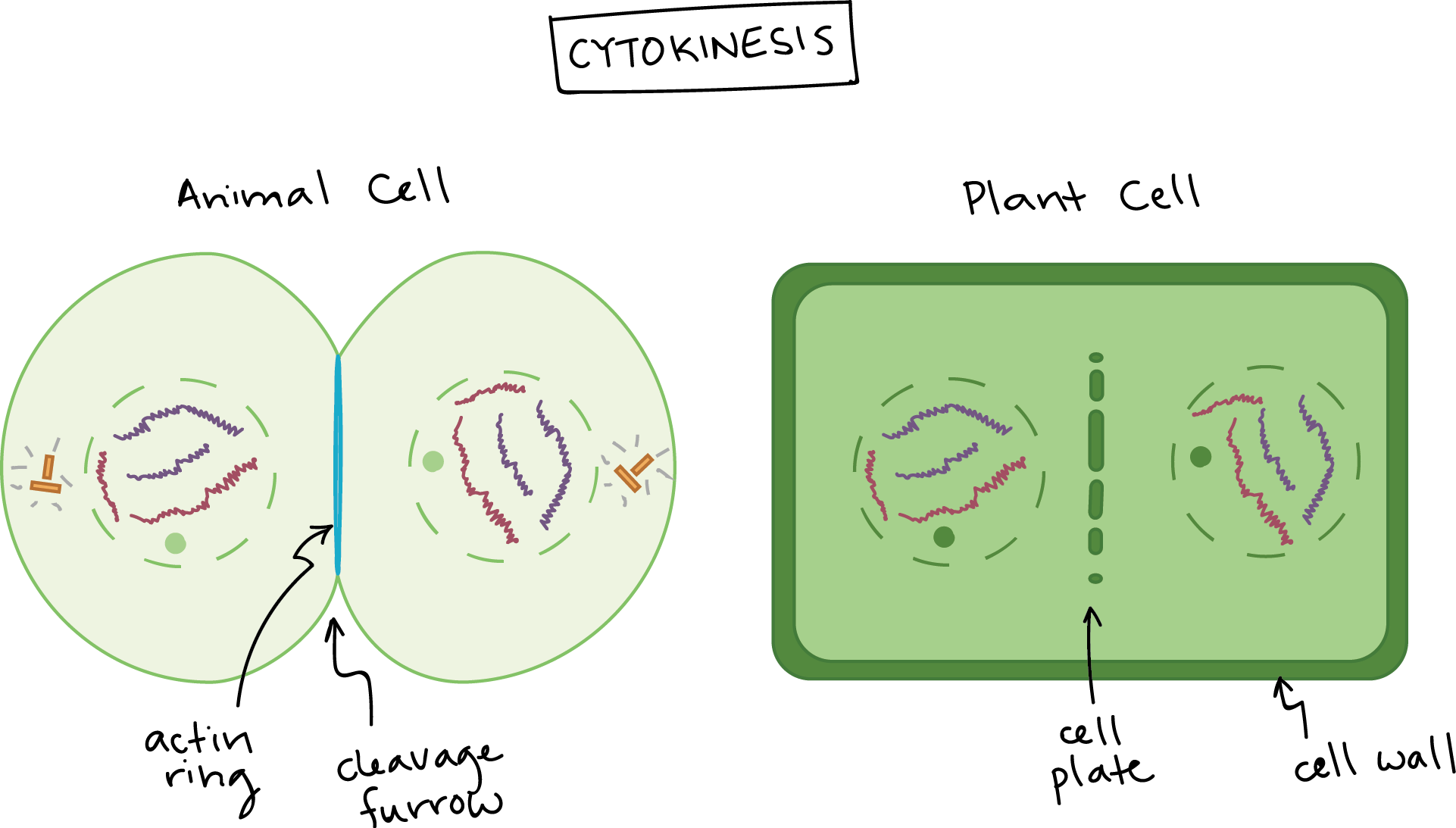
Regulation
Cyclin
when cyclin has built up enough to bind to Cdk, it indicates enough time has passed for the cell to mature
cyclin and Cdk bind to make MPF (maturation promoting factor)
MPF promotes the entrance into mitosis from the G₂ phase
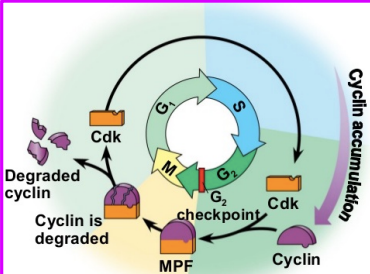
Other features of division and cancer cells
Quorum sensing
bacteria use chemical signals to measure population density
Use of chemical messengers by microbes to communicate with other nearby cells and to regulate specific pathways in response to population density (quorum sensing)
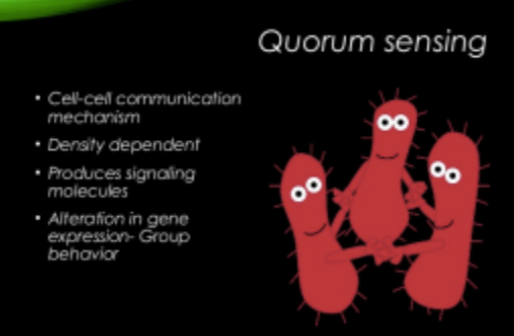
Density dependant
stops cell division when there are already a lot of cells
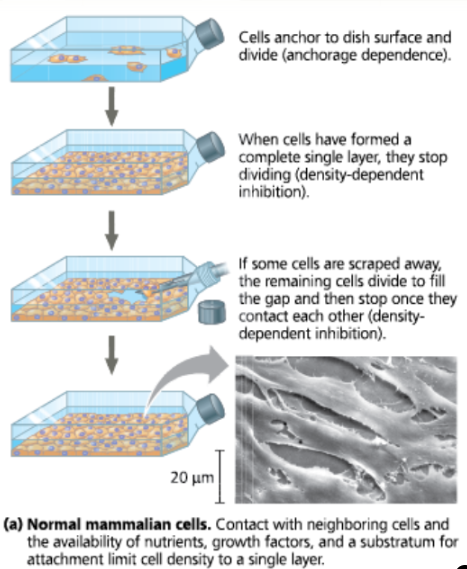
cancer cells experience unregulated cell division and continue dividing
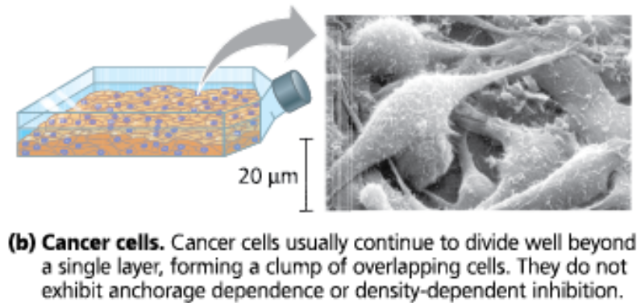
Anchorage dependence
The requirement that a cell must be attached to a substratum in order to initiate a cell division
